Master’s student Julia Rouet-Leduc travelled to the Lapland rewilding area in April to conduct research for her thesis. She drew some interesting conclusions.
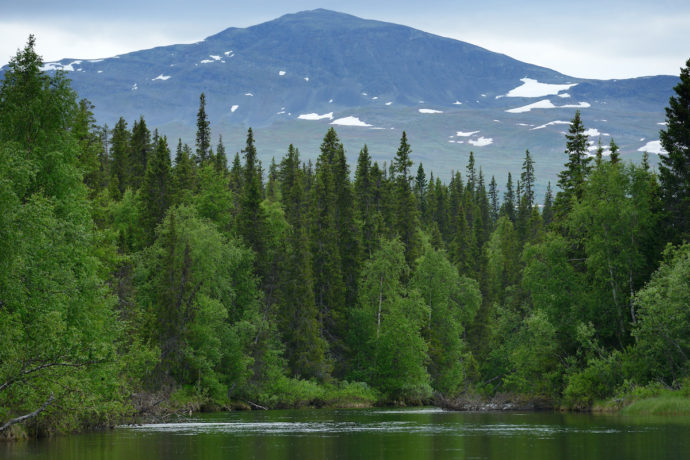
Julia Rouet-Leduc is studying for a Master’s degree in sustainable development at the Swedish University of Agricultural Sciences in Uppsala. In April this year she travelled to the Lapland rewilding area to conduct research for her thesis on the compromises of rewilding. Interviewing a range of local stakeholders, she received support from Rewilding Lapland team leader Håkan Landström and Rewilding Lapland Foundation board member Magnus Sylvén.
We caught up with Julia to have a quick chat about her work, and her views on the practicalities of rewilding in the far north of Sweden.
Why did you choose the subject of rewilding – and more specifically the compromises of rewilding – for your thesis? And why Lapland? How much did you know about rewilding before you began your thesis?
I have always been very interested in animals, wildlife and nature, so I contacted a researcher at the Swedish University of Agricultural Sciences (SLU) that I knew worked on these topics. She was the one who proposed rewilding.
I had heard a little about rewilding before in class, but I was enthusiastic about the idea right away. Rewilding is such an intriguing, broad and complex concept that I was really excited about it. I chose Lapland because I am fascinated with Sweden, and the fact that I speak Swedish and live in Sweden made interviews far easier. The notion of compromises came up after some background research. Rewilding is such a bold conservation approach that I think compromise is key to actually making it work in the field.
The title of your thesis is “The Compromises of Rewilding”. Can you please explain, in a concise way, what you identified as the main compromise involved with the current work to rewild Lapland.
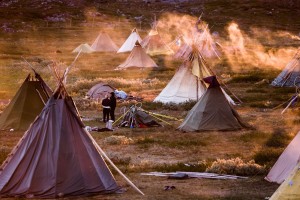
Compromise is about preventing conflict or reducing tension by finding mutually acceptable solutions. In the case of my thesis, I would say it is about preempting human-wildlife conflict by giving large carnivores an economic value.
There has long been conflict between the Sámi and large carnivores over reindeer predation. This was especially true in the past with wolves (the wolf is now completely absent from Swedish Lapland). Rewilding Lapland is promoting to mitigate this conflict by developing a coexistence model, whereby the development of a local nature-based economy will allow the Sami to benefit economically from wild nature, including the large carnivores (brown bears, wolverines and Eurasian lynx) that currently exist in the rewilding area. This would be through activities such as wildlife watching.
I think this kind of compromise model, which creates an economic incentive for rewilding, is a really pragmatic way to ensure effective nature conservation.
Can reindeer herding ever be considered sustainable if it results in artificially low populations of predators?
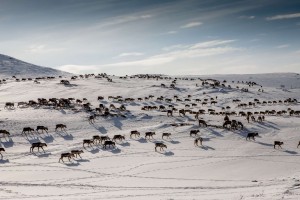
That’s an interesting question, and I think it depends partly on how one looks at sustainability. In the case of Lapland, reindeer herding is really anchored in the landscape and cultural traditions of the area. It shapes the environment and has a direct influence on predator populations.
Rewilding can take different baselines for how nature should look. Reindeer herding activities are part of an ancient natural-cultural landscape that should be valued, along with old-growth forests and more natural river systems.
Populations of predators are frequently low in places where humans live. Many people believe that rewilding is all about restoring ecosystems to a time that pre-dates human evolution. This may sound fascinating and exciting, but is simply impractical in most places. With rewilding about looking to the future, rather than returning to a state in the past, it is also undesirable. I think this is why the projects of Rewilding Europe focus on the coexistence of people and wildlife, and the attachment of an economic value to rewilding activities.
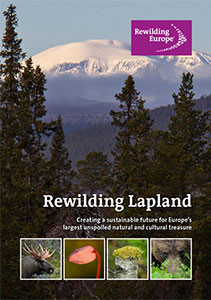 Did you find any of the views of the people you interviewed surprising? If so, what surprised you the most? Is it fair to say that interviewees were, by and large, enthusiastic about the rewilding process?
Did you find any of the views of the people you interviewed surprising? If so, what surprised you the most? Is it fair to say that interviewees were, by and large, enthusiastic about the rewilding process?
The interviewees were mostly enthusiastic about what Rewilding Lapland is doing. I think this enthusiasm came mostly from common views and interests in old-growth forest conservation and river restoration. What surprised me, and what I did not realize before I went up there, is how much intensive forestry and other industries are impacting the landscapes of Lapland. I think a lot of people in Lapland, like the ones I interviewed, have a shared vision of nature conservation, whether it be for tourism activities or reindeer herding.
One of the most interesting conclusions of your thesis is the possibility that wild nature needs a voice in the debate over conservation. As you say, if stakeholders represent themselves and their own best interests, how does nature represent itself? Can you elaborate on this? Do you have any suggestions?
This conclusion stemmed from several conversations that I had with people telling me that in this day and age economic interests will always prevail over nature’s interests, so the best way to protect nature could be to give it a voice. On a more practical level, I think it could be that elements of nature or animals actually become legal . I think this is an increasingly popular idea.
From your time spent in Lapland, what would you say are the biggest challenges facing Rewilding Europe as it attempts to rewild this area?
I think there are several challenges that are linked to the unique character of the Lapland area. In comparison with other rewilding areas, which often comprise abandoned farmland, Lapland has very little agricultural land. It also has very important cultural landscapes connected to the Sámi and their livelihood.
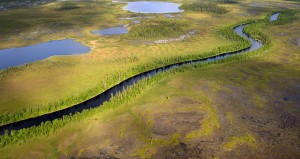
Sámi reindeer herders depend a lot on natural landscapes for their activities and are very sensitive to land degradation, deforestation, predator presence and so on. I think the biggest challenge for Rewilding Europe in this area is to create a rewilded area that is compatible with Sámi activities and that creates interesting opportunities for reindeer herders and those involved in tourism. This is such a wide ranging area, with such contrasting landscapes (national parks as well as exploited forest), that reconciling the interests and ensuring the cooperation of all the stakeholders is always going to be demanding.
What are your views on compromise in conservation? As man’s activities and presence spread inexorably across the planet, will the attempted restoration of “wild” habitats always involve some kind of compromise?
Compromise in nature conservation is tricky because it can be a way to get things done by taking into consideration the views of different stakeholders. But results can be disappointing if you compromise so much that it’s not really conservation any more.
Unless you’re talking about a completely remote and pristine area, I think there is always compromise in conservation. Nevertheless, it is always important to identify the most important elements of what you want to achieve, and make them uncompromisable. These are the “red lines” that shouldn’t be crossed.
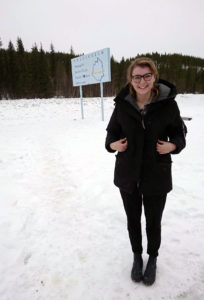
What are you plans for the future? Will you take the research carried out in this thesis any further?
I am now in the process of turning my Master’s thesis into an academic article. With my supervisor as my co-author, this will be based around the theme of human-nature reconciliation.
In addition to this, I am exploring the possibility of working with rewilding more practically, rather than in an academic way. It is such an endless and fascinating subject that I am sure it will become ever more popular in the future!
A question of scale
As Julia points out, rewilding in Europe has to be pragmatic. Rewilding is not synonymous with wilderness. As a process rather than a state, it is about moving up a scale of wildness within the constraints of what is possible.
To quantify the process of rewilding, Rewilding Europe is currently developing a new tool – the “Rewilding Scale”. Learn more on page 11 of the Annual Review 2015 here.
The Rewilding Scale is currently being tested in the Rhodope Mountains of Bulgaria. Learn more here.
Learn more about Rewilding Europe’s activities in Lapland here.
Visit the Rewilding Lapland Facebook page here.
